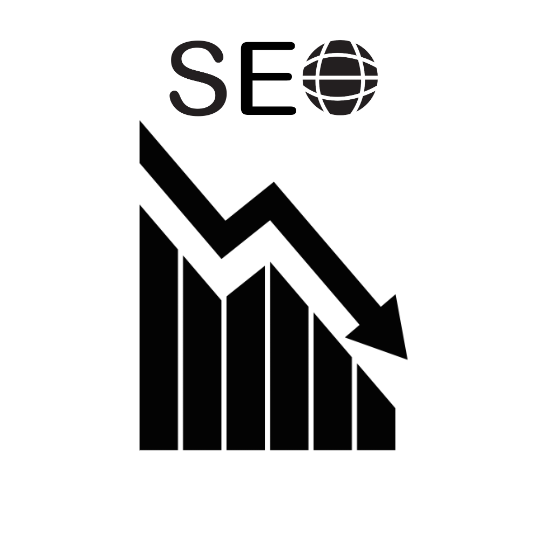
SEO, also known as Search Engine Optimization, is the complex and diverse process of improving the visibility of a website in search results on the internet. The purpose of this meticulous effort is to increase the ranking position of a website in the unpaid search results offered by well-known search engines. The main goal is to obtain a higher position in these search results, which will increase the chances of attracting more web traffic and engagement.
SEO experts carefully evaluate and skillfully manipulate different aspects of both on-page and off-page factors. On-page optimization involves paying close attention to the content, structure, and coding of pages. This includes optimizing metadata, headings, keywords, and other relevant features that help search engines recognize the site better. On the other hand, off-page optimization mainly focuses on external strategies like acquiring high-quality backlinks from reputable websites or effectively utilizing social media platforms. By successfully implementing these SEO techniques, a website's visibility and prominence can greatly improve in a highly competitive digital environment while also fostering higher engagement.
Phone Calls Slow Down
Your website and landing pages are built with the goal of having them appear higher in search results. This criteria is always changing to keep up with searchers’ needs and expectations, so your approach to your page design must change to keep up with them.
This endeavor entails employing a myriad of techniques, encompassing both on-page and off-page elements, with the ultimate aim of securing a higher position within search results pages (SERPs). By meticulously tailoring various aspects of the website and its associated landing pages, such as content structure, meta tags, keyword integration, navigational design, and user experience enhancement, one endeavors to enhance their online presence.
In order to accomplish this ambitious objective, it is imperative to pay careful attention to search engine optimization (SEO) practices. SEO entails employing a variety of precisely calibrated strategies that align with the preferences and algorithms utilized by prominent search engines such as Google. The ultimate aim is to enhance the website's organic visibility by ensuring it adheres to the intricate parameters established by these digital authorities.
By adhering to best practices such as optimizing page loading times, enhancing mobile responsiveness, cultivating high-quality backlinks from reputable sources, and fostering engaging content that resonates well with target audiences' search queries—among a plethora of other tactics—one aims to ascend in SERPs for relevant keywords and phrases.
Considering the passage of time spanning over several years or possibly a shorter period of a few months, it becomes apparent that the current state of your website's update history could lead to a decrease in the conversion rate. This observed phenomenon indicates a decline in the percentage of visitors who successfully move from browsing to actively engaging or making transactions on your online platform.
The reason behind this decline is based on the belief that a long period of time without a thorough update negatively affects the user experience, making it harder for users to stay motivated and take the desired actions. The ever-changing nature of the online world requires regular updates and changes to meet the evolving preferences of users, technological advancements, and emerging market trends. Therefore, failing to update in a timely manner creates a gap between what users expect and what your website actually offers, which can ultimately result in a decrease in conversion rate over time.
In order to maintain optimal conversion rates in the ever-changing digital landscape, conscientious website operators must be aware of the complex relationship between time intervals and updates. By regularly maintaining their websites, including updating content, enhancing the interface, and adding new features, businesses can create a balance between user expectations and actual experiences in the virtual world. Taking these proactive measures is essential for sustaining successful conversion rates.
Decline in Organic Website Traffic
Organic traffic is one of the most reliable ways to measure the effectiveness of your SEO, as it refers to the people who found your website through a search engine. If you log into the Google Analytics tool then click on “Acquisitions,” you will see a breakdown of where the traffic to your site is coming from, including searches, social media, direct visits, and referrals. This is something you want to keep an eye on monthly, if not weekly, to look for any drops and where they are coming from.
Drop in Keyword Rankings
Although keywords no longer have the same level of significance in search rankings as before, they still contribute to Google's perception of your website. Nowadays, keywords are more closely tied to the searcher's intent. This implies that instead of solely focusing on specific keywords, it is essential to incorporate high-quality and relevant content features into your website. By monitoring the performance of about six keywords, you can assess their impact on your rankings.
Excessive keyword usage on your website can result in a decrease in rank within the Google search algorithm. When keywords are excessively used and grouped together at the top of your page, Google considers it as spam and consequently lowers your ranking. Although monitoring keyword performance may be time-consuming, it can offer valuable insights into your rankings.
So, what's the solution to these problems? The key is to keep yourself informed about the criteria that major search engines use to evaluate how well your website matches the searches being conducted. Make sure to distribute your keywords evenly throughout the page, keeping the ratio of keywords to content below 3 percent. Regularly update your site, preferably on a weekly basis, so that Google knows it is actively maintained. And most importantly, take advantage of Google's reporting tools to identify areas where improvements are needed, ensuring that your site stays at the top.
